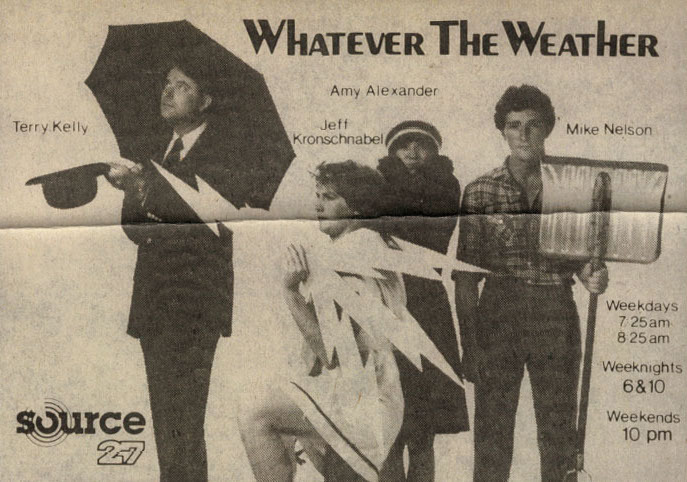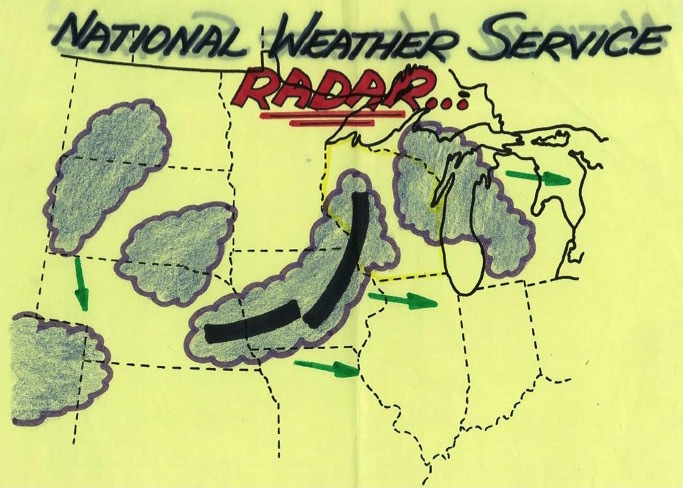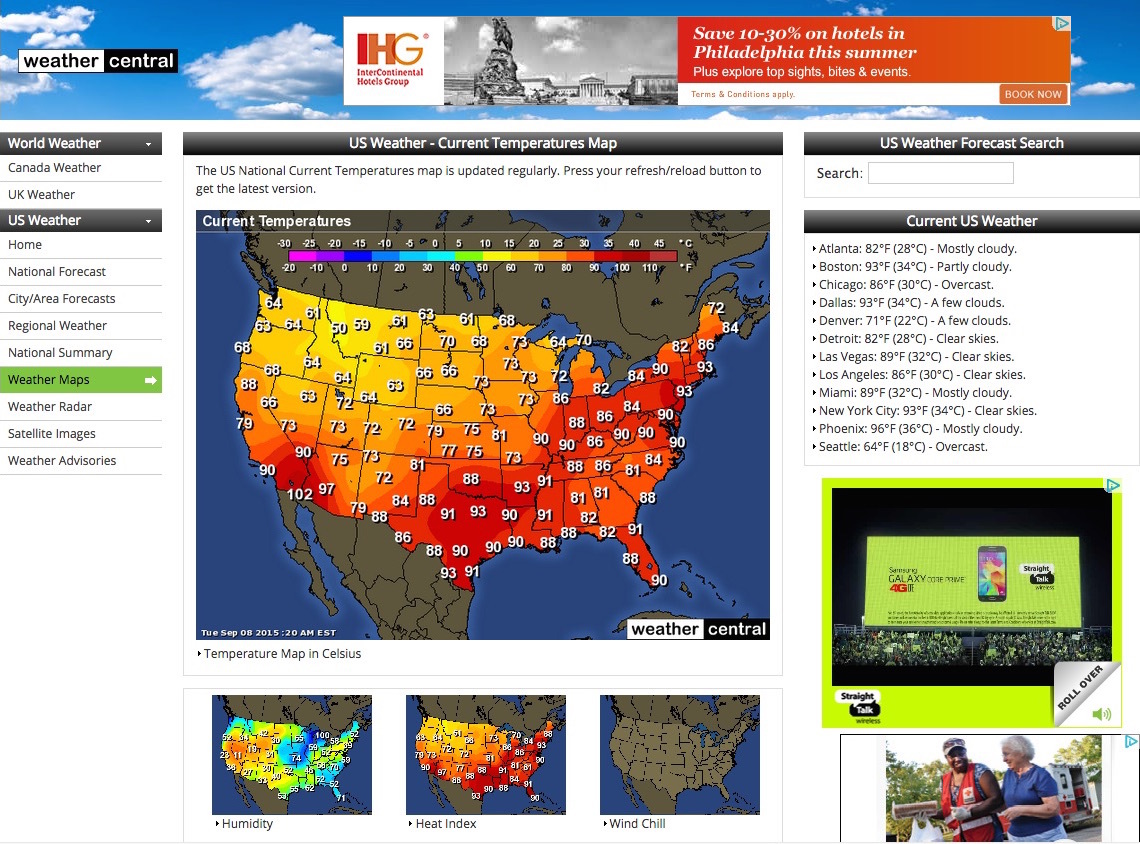Weather-tech jobs remain in Madison even after company is sold

With a background in meteorology at UW–Madison and experience as a weatherman on WKOW Channel 27, Terry Kelly was ideally positioned to serve weather forecasts and graphics to the American TV industry. Photo circa 1977.
Courtesy of Terry Kelly
His demo tape as a TV weatherman was adjudged “pretty awful,” yet it got University of Wisconsin–Madison grad Terry Kelly started “doing the weather” on WKOW Channel 27 in Madison in 1974. To improve on the paper drawings he was using to show storms and fronts, Kelly started Weather Central and built it into America’s premier computer weather graphics and weather modeling business.
By 2011, the company’s 170 employees were providing forecasts, graphics and data to the majority of American TV stations. Although Kelly sold Weather Central to The Weather Company, owner of The Weather Channel, in 2012, 85 jobs remain in Madison.
Kelly’s exposure to weather technology began while he was working on a master’s degree in meteorology at UW–Madison, where the invention of the imaging hardware and graphics displays at the heart of the first weather satellites set the groundwork for a three-way marriage between meteorology, computers and space imaging technology.
Kelly is now president of Venture Management LLC, which has holdings in more than 20 companies.
That technology stirred big thoughts in the people around meteorology Professor Verner Suomi, who’s often called “the father of the weather satellite.”
“As sensors became more capable in atmospheric science,” Kelly says, “we were thinking, ‘How could we make a more precise and accurate forecast that would be useful for specialized needs in industries like canners and freezers, ski areas, aviation and others? Could we predict hourly temperature and dew point so power utilities could better forecast loads?'”
TV weather presentations were primitive when Kelly first stood before a video camera. “Most weather people used chalkboard,” he says. “Our operation was considered really advanced. With Mike Nelson, one of our young meteorologists, I figured out how to make weather maps with translucent plastic from an art store, scalloped with a razor knife into clouds and storms.”
Kelly’s innovations impressed his boss at WKOW, Terry Shockley, who’s now a lifelong friend and business partner. “Terry Shockley and his wife Sandy always encouraged people to invent new capabilities, and to take risks,” Kelly says. “He gave us space in his studio buildings, asking nothing in return other than that his stations benefit from whatever we invented.”

This paper mockup showed Kelly’s ideas from the 1970s for electronic weather presentations that were later created by Weather Central.
Courtesy of Terry Kelly
The saga of two Kelly companies, Weather Central and ColorGraphics Weather Systems, includes a 1982 sale to a conglomerate, a 1994 buy-back, the resurgence of Weather Central internationally, and its eventual sale to The Weather Company.
Weather Company spokesman David Blumenthal says the buyer prized Weather Central’s forecasting, graphics and ability to predict hailstorms, which can trigger automated warnings to car dealers and others threatened by major hail. “This increases customer satisfaction for the insurance company, and also reduces claims.”
Kelly began investing in high-tech companies many years ago. He is president of Venture Management LLC, which has holdings in more than 20 companies. Most are in Wisconsin, and a good number, like Weather Central, have their origin or inspiration in labs at UW–Madison and other universities.
Venture’s strategy is to play an active role in the companies it invests in, Kelly says, and it’s clear that his long experience in business is brought to bear with managers with less experience. As Kelly talks, those business lessons spill out like rice from a torn bag in a checkout lane.

Although Kelly sold Weather Central to The Weather Company, owner of The Weather Channel, in 2012, 85 jobs remain in Madison.
Kelly learned the language of prices in 1979, for example, when a new weather graphic display attracted “a huge amount of interest” at a trade show. So why didn’t they sell? Because, Kelly was told, “Everybody knows it can’t work; nothing that costs only $13,000 could possibly do what you are claiming it does.”
Lesson learned, Kelly says. He went home, tripled the sales price, “and they began selling like hotcakes.”
Here’s a broader lesson for surviving in high-tech — or indeed, any business: “Talent, opportunity, luck, financial support and patents are all useful, but there’s no substitute for outworking everybody else.”
Back at UW–Madison, where in the mid-1970s Kelly worked on a production system for TV weather based on satellite imagery, the Cooperative Institute for Meteorological Satellite Studies (CIMSS) continues to enhance the vast weather research and forecast infrastructure that was born in the 1950s.
According to CIMSS director Steven Ackerman, a professor of atmospheric science, Kelly took a good hand and played it to perfection. “Terry Kelly had the vision and the ability to leverage research tools developed at UW–Madison to study weather and satellite images, and apply and modify them to communicate weather to the public.”




